

Looking for another way to spend quality time with your beloved canine companion? Then look no further than dog yoga.
Also known as doga, this at-home activity is perfect for chilly winter days or just days when you're cooped up indoors when long outdoor walks and backyard fetch sessions just aren't viable options. It lets you treat your dog to some one-on-one attention infused with range-of-motion movements and nurturing mental connections.
Does this sound like the right fitness regimen for your pup? Let's take a deeper dive into what doga's all about.
What Is Dog Yoga?
Bringing your fur baby to the yoga studio to mingle among the humans practicing their downward-facing dog and sturdy warrior poses is sometimes an option, but it's very passive for your pet. Doga is a form of yoga that humans and pets do together at home, which may help promote you and your dog's physical and mental wellness.
The benefits of dog yoga are numerous: Dogs may experience improved posture, better sleep and a boost in bonding with their favorite human after a good doga workout. Additionally, spending time doing yoga with your dog may help alleviate stress and anxiety for you and make your pet feel important, which may help curb behavioral issues.
"So many behavioral issues come from attention-seeking behaviors,"Danni Shemanski, a veterinarian who teaches doga at the Hilton Vet Hospital in New York, told WHEC, "so this is a great way that both the (pet parent) and the dog can benefit."
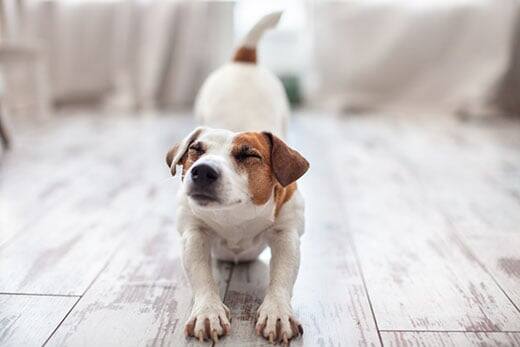
Is My Dog a Good Candidate for Yoga?
Suzi Teitelman is hailed as the creator and founder of doga, which she says she brought to fruition in 2001, reported Newsweek. According to her website, Dogadog, doga is for all pups and people and it's never too late to start practicing. The key is to remember that each dog and human are individuals and will have unique needs based on their age and health. So before you start doga or any new physical activity with your dog, consult your vet.
A spike in heart rate or uncommon movements may not be recommended, especially if your pet is on prescription medication or has an active medical condition. But yoga is just the combination of quiet moments, focused breathwork and gentle movements, and it can be made more strenuous or slow to suit almost any dog.


Tasty Tips
How to Get Your Doga On
Doga can be as simple as you sitting comfortably and doing focused breathing while your dog lays next to you, explained Your Dog, with tiny shoulder lifts or head turns added in to ease muscle tension. You can also make these sessions more advanced by incorporating other positions:
- Easy seated pose, also known as Sukhasana, requires you to sit on the floor, cross-legged with your back straight, and let your pup come to you. In this pose, focus on long inhales and exhales, watching your dog get interested in your breathing and become peaceful with you. They may try to sit on your lap and match your breathing pattern. Or, they might lay on the floor next to you, snuggling with your legs.
- Standing forward bend, or Uttanasana, is a standing pose in which you'll reach toward your toes and extend your hands to your dog, giving them a gentle rub. Stand upright, then fold again, making contact with your pet as you lower to the ground. After a few repetitions, your pet will understand the movement and come to enjoy the loving physical touch, which could be a gentle pet or a more active massaging movement — depending on what they're most comfortable with.
If you're looking for a more hands-on way to move your dog's legs and massage their muscles within a yoga framework, contact a pet rehabilitation clinic or physical therapy provider. These health care professionals can train you to safely move your pet's limbs in a way that strengthens their muscles and increases mobility.
Spending more time with your pet is always beneficial for them and you, too. Dog yoga affords you more one-on-one time with your pup. It's also a fun activity that can be done in the comfort of your home.
Feeling inspired to get on the mat with your pup? Give your vet a call to see if they have any tips for incorporating intentional movements and breathwork into your pet's daily routine.


Angela Tague is a pet mom and writer living in the Midwest. When she's not making a mess in the kitchen, exploring nature trails with her dog, or attending a yoga workshop, she's writing full-time for multiple lifestyle and technology brands. You can find her on Twitter and LinkedIn @AngelaTague.
Related products

Hill's Science Diet Puppy Sensitive Stomach & Skin Salmon & Vegetable Stew
Gentle on stomachs while nourishing skin & supporting development in growing puppies

Hill's Science Diet Puppy Lamb Meal & Brown Rice Recipe
Vital nutrients to support 5 essential building blocks for lifelong health

Hill's Science Diet Adult 7+ Beef & Barley Entrée Dog Food
Beef & Barley recipe with precisely balanced nutrition to support mobility and muscle mass for older dogs.

Hill's Science Diet Adult 7+ Chicken Meal, Barley & Rice Recipe Dog Food
Supports energy level and beautiful coat in mature dogs

Hill's Science Diet Adult Small & Mini Chicken & Barley Entrée Dog Food
Chicken & Barley recipe with precisely balanced nutrition to keep adult dogs active and healthy.

Hill's Science Diet Puppy Small & Mini Savory Stew with Chicken & Vegetables
A delicious complement to the nutrition of Science Diet Small & Mini dog food

Hill's Science Diet Puppy No Corn, Wheat, Soy Chicken & Brown Rice Recipe
Supports healthy brain, eye, muscle, bone & immune system development in growing puppies

Hill's Science Diet Puppy Small & Mini Chicken & Brown Rice Recipe
Vital nutrients to support 5 essential building blocks for lifelong health, tailored for unique needs of Small and Mini puppies

Hill's Science Diet Puppy Small Bites Chicken & Brown Rice Recipe
Vital nutrients to support 5 essential building blocks for lifelong health

Hill's Science Diet Puppy Small & Mini Chicken & Brown Rice Recipe
Vital nutrients to support 5 essential building blocks for lifelong health, tailored for unique needs of Small and Mini puppies

Hill's Science Diet Adult Chicken & Barley Recipe Dog Food
Supports lean muscle and beautiful coat for adult dogs

Hill's Science Diet Adult 7+ Chicken & Barley Entrée Dog Food
Chicken & Barley recipe with precisely balanced nutrition to support mobility and muscle mass for older dogs

Hill's Science Diet Puppy Chicken & Barley Entrée
Chicken & barley entree with great taste and precisely balanced nutrition to support 5 essential building blocks for lifelong health

Hill's Science Diet Puppy Sensitive Stomach & Skin Salmon & Brown Rice Recipe
Gentle on stomachs while nourishing skin & supporting development in growing puppies

Hill's Science Diet Puppy Chicken & Brown Rice Recipe
Vital nutrients to support 5 essential building blocks for lifelong health

Hill's Science Diet Adult 6+ Large Breed Chicken Meal, Barley & Rice Recipe Dog Food
Supports energy level, joint health, and beautiful coat in large breed mature dogs

Hill's Science Diet Puppy Small & Mini Beef & Barley Entrée
Beef & Barley Entrée with great taste and precisely balanced nutrition to support 5 essential building blocks for lifelong health

Hill's Science Diet Puppy Large Breed Lamb Meal & Brown Rice Recipe
Vital nutrients to support 5 essential building blocks for lifelong health

Hill's Science Diet Adult 7+ Small & Mini Chicken & Brown Rice Recipe Dog Food
For the unique nutritional needs of mature Small & Mini dogs

Hill's Science Diet Puppy Savory Stew with Chicken & Vegetables
Chicken & Vegetables recipe with great taste and precisely balanced nutrition to help your puppy build immunity and strong bones
Related articles

Dog Snow Nose: Why Dogs' Noses Turn Pink in the Winter
Find out what causes some dogs' noses to turn pink in colder weather, which breeds experience snow nose most, and if it could indicate a health issue.

Weight Loss Goals & How Your Dog Can Help
Learn some great ways to involve your dog in your weight loss goals, including exercise & activities you can both do and healthy snacks for both of you.

Understanding Pancreatitis in Dogs: Symptoms, Treatment & More
Learn helpful information about pancreatitis in dogs, including common symptoms, how it's diagnosed & treated, and long-term prognosis for dogs with it.
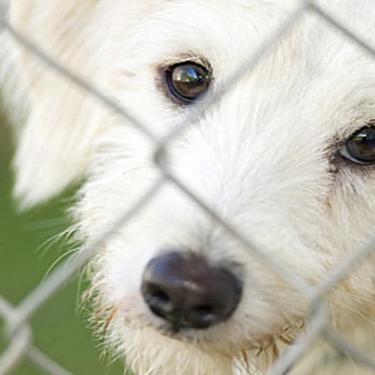
Avoiding Returning a Dog to the Animal Shelter
Learn how to avoid having to return a dog to the animal shelter after adoption by understanding the reasons why dogs are returned.
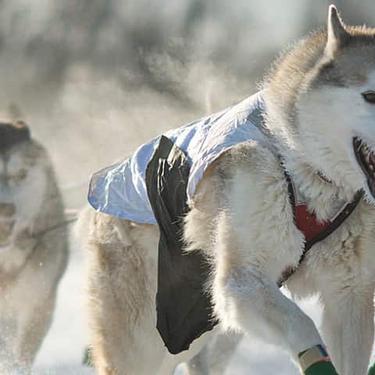
Sled Dogs Amazing Story of Strength and Beauty
Learn more about sled dogs and their role in today's wilderness treks, as well as their rich history helping to settle the Alaskan frontier.
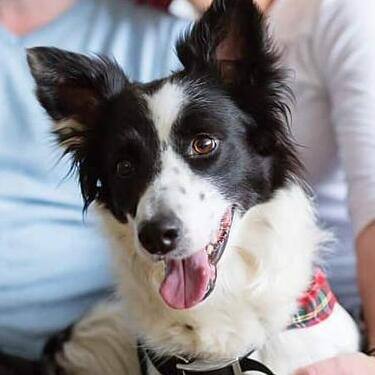
Is My Dog Really Watching TV?
Discover if your dog is actually interested in watching TV, how to pick something you'll both like and the science behind some dogs' TV preferences.

How Can I Stop My Dog From Chewing?
Learn the real reasons why your dog likes to chew on your stuff and some effective ways you can control his crazy chewing habits.
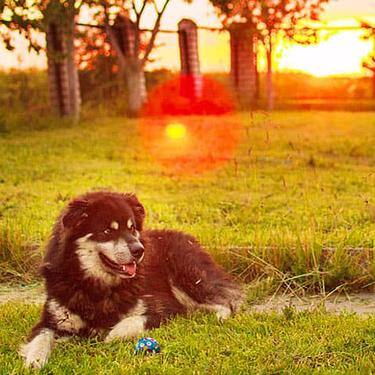
Tips for Keeping Your Dog Safe Outside
Learn the dangers of leaving your dog outside by himself, such as extreme heat or cold weather, and what you can do to help keep him safe.
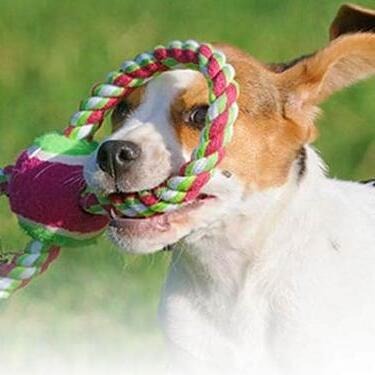
When is a Puppy an Adult Dog?
By one year old, you puppy will be an adult dog – some behaviors may not change any time soon, but his needs in many areas have changed.

Can Dogs Eat Cheese?
Learn whether cheese is a snack that's safe for your dog, including specific types of cheese, ingredients to watch for and how much is ideal.
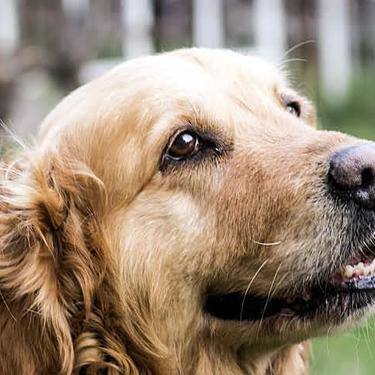
Are Tomatoes Bad for Dogs? What You Need to Know
Learn whether dogs can safely eat tomatoes, including what to do if a dog eats different types of foods with tomatoes and if there is a medical concern.

Dog Goggles: Does My Pup Need Them?
Learn everything you need to know about dog goggles, including when your dog might need them, the difference between goggles and sunglasses, and more.
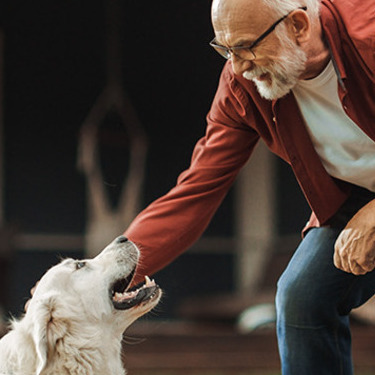
How to Compare Dog Years to Human Years
Learn how to simply and inexpensively build a DIY dog ramp to help your dog get up & down more easily (great for senior dogs & those with mobility issues).
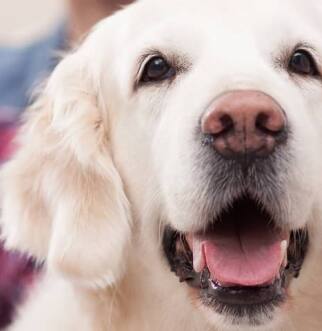
Dealing With Dog Mange
Learn about the skin condition called dog mange: what it is, how to spot the symptoms, and treatments for both Demodectic & Sarcoptic types of the disease.

Dog Warts: What are They & What Causes Them?
Learn whether dogs can actually get warts and their similarities to other skin growths, as well as whether they can be harmful for your dog.

Can My Dog Eat Spicy Food?
Find out if you can feed your dog spicy food or add some spicy flavor to his dog food, and any health implications of doing so.

Albino Dogs: Understanding a Rare Condition
Are all dogs with white fur considered albino? Learn the characteristics of albino dogs, along with considerations if you're interested in adopting one.

Caring for Dogs With Conjunctivitis
Learn how to recognize the signs of conjunctivitis in dogs, how contagious he might be to you and other dogs, and what the available treatment options are.
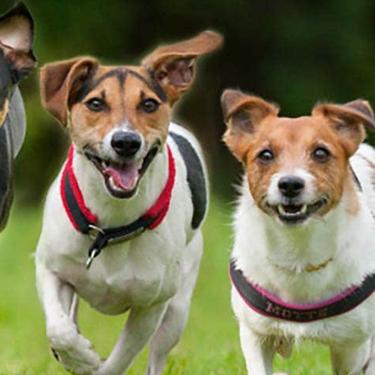
Brain Aging in Dogs: Symptoms & Treatment
Learn what causes brain aging, behavioral changes and alertness in your aging dog. Discover what you can do to help prevent some of these dog diseases.
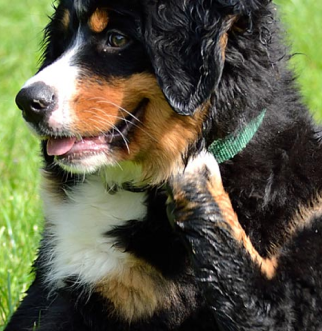
Why Is My Dog Itching?
Learn about the many causes of your dog's itching, from fleas and ticks to allergies. Explore how you can prevent and address these problems in your dog.
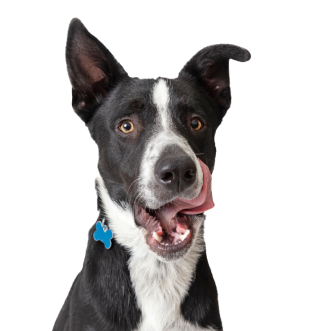
Put your dog on a diet without them knowing
Our low calorie formula helps you control your dog's weight. It's packed with high-quality protein for building lean muscles, and made with purposeful ingredients for a flavorful, nutritious meal. Clinically proven antioxidants, Vitamin C+E, help promote a healthy immune system.
Put your dog on a diet without them knowing
Our low calorie formula helps you control your dog's weight. It's packed with high-quality protein for building lean muscles, and made with purposeful ingredients for a flavorful, nutritious meal. Clinically proven antioxidants, Vitamin C+E, help promote a healthy immune system.
©2024 Hill's Pet Nutrition, Inc. As used herein, denotes registered trademark status in the U.S. only; registration status in other geographies may be different. Your use of this site is subject to the terms of our Legal Statement. About our Ads. Cookie Consent Tool
